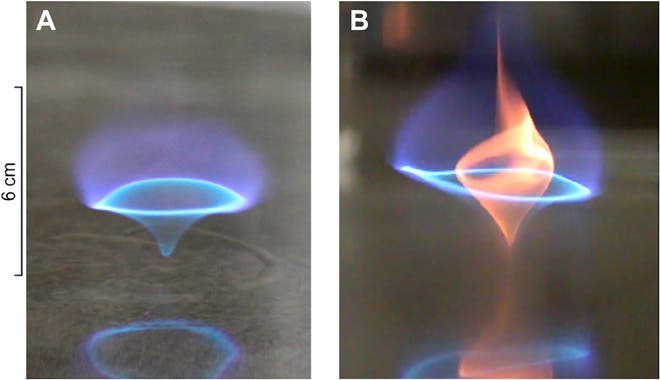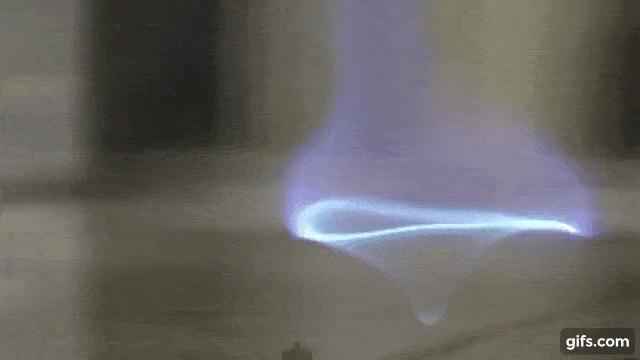In 2016, when researchers were looking into the most effective ways to clean ocean oil spills. They were experimenting with fire whirlwinds when they accidentally generated a whirling, blue, soot-free flame that consumes all the fuel it encounters.
This elusive type of flame has puzzled researchers ever since, until now, when its mystery may have finally been cracked.

“The blue whirl is a small, stable, spinning blue flame that evolved spontaneously in recent laboratory experiments while studying turbulent, sooty fire whirls. It burns a range of different liquid hydrocarbon fuels cleanly with no soot production, presenting a previously unknown potential way for low-emission combustion,” the researchers describe the phenomenon in a new study.
Although fire whirls are dangerous, violent, and turbulent, they can be created in (relatively) safe conditions for laboratory study. What’s more, because the whirl burns without soot in a seemingly clean combustion, it might indeed be used for ocean clean-ups.
But even with lab experiments, researchers still couldn’t tell exactly what was going on with the flame.
Flames generally fall into two categories: premixed and diffusion flames. Premixed flames occur in homogeneous mixtures where the fuel and the oxidant are already mixed prior to the reaction (think of a Bunsen burner); premixed flames can in turn be rich or lean, depending on whether they have an excess or dearth of fuel relative to the oxidizer. Meanwhile, in diffusion flames, the fuel and the oxidant are initially separate, which limits how fast the fire can burn. The blue whirl seems to be neither, or rather, a bit of both.

To crack the mystery, Joseph Chung and Xiao Zhang at the University of Maryland, College Park, and their colleagues created computer simulations of the flame.
They tweaked the model parameters more and more, until it finally started behaving like what they observed in experiments, and that’s when they finally understood what was going on.
According to these simulations, the blue whirl consists of three different flames: a diffusion flame, a premixed rich, and a premixed lean flame. When they all meet together, they form a fourth structure — a triple flame forming a blue ring.
“The results also show that the flow structure emerges as the result of vortex breakdown, a fluid instability that occurs in swirling flows. These simulations are a critical step forward in understanding how to use this previously unknown form of clean combustion,” the researchers explain.

Aside from helping explain an interesting phenomenon, the study could also help researchers learn to harness the power of the blue whirl for a cleaner, more efficient combustion, for instance reducing emissions from burning hydrocarbons in power plants or stoves.
While burning hydrocarbons is far from ideal and we will hopefully transition to renewable energy as quickly as possible, it won’t happen overnight and any tool that could help us is more than welcome.
Journal Reference









